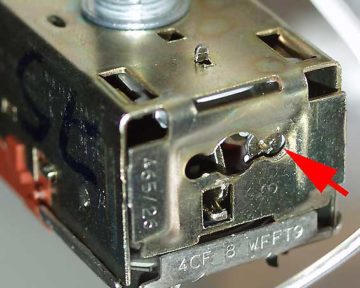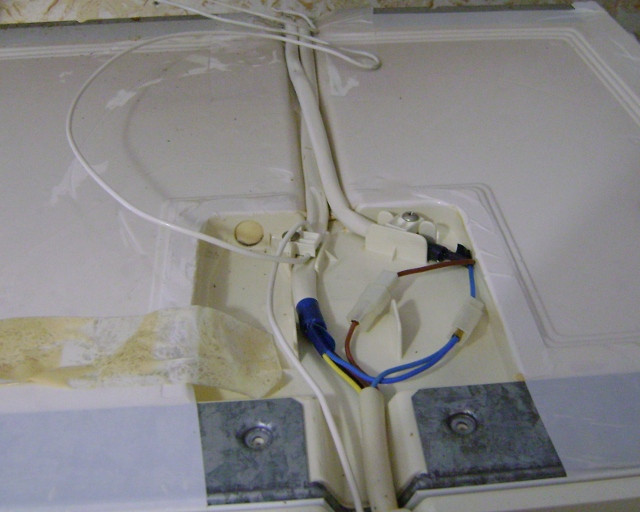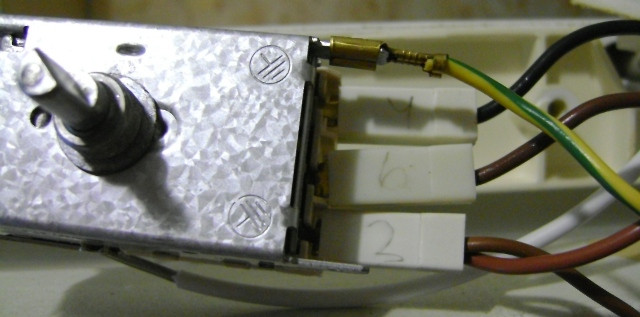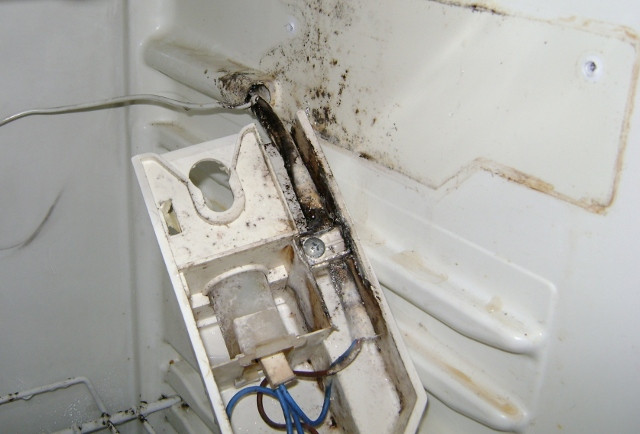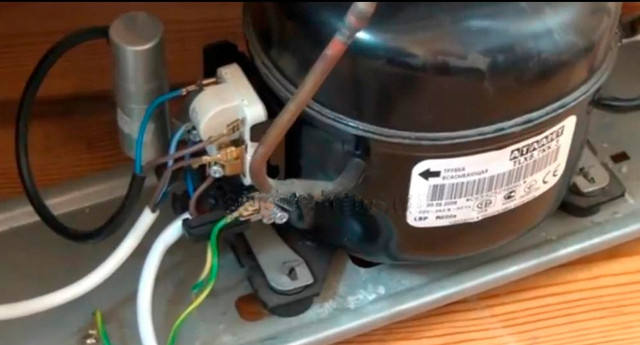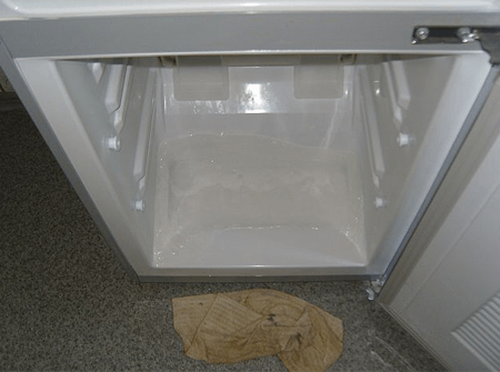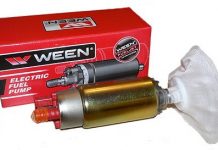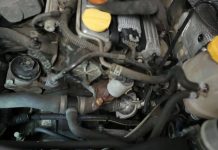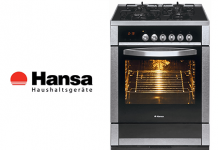In detail: do-it-yourself refrigerator thermostat repair from a real master for the site my.housecope.com.
The refrigerator most often breaks down at the most inopportune moment. What was the reason, how serious the breakdown is, how it can be fixed - the summary table of refrigerator malfunctions will help to answer these questions.
Classic refrigerator (without No Frost system) works as follows:
The motor - compressor (1), sucks in gaseous freon from the evaporator, compresses it, and pushes it through the filter (6) into the condenser (7).
Freon heated by compression in the condenser
cools down to room temperature and finally turns into a liquid state.
Liquid freon, under pressure, through the opening of the capillary (8) enters the inner cavity of the evaporator (5), turns into a gaseous state, as a result of which, it takes away heat from the walls of the evaporator, and the evaporator, in turn, cools the inner space of the refrigerator.
This process is repeated until
reaching the temperature of the evaporator walls set by the thermostat (3).
When the required temperature is reached, the thermostat opens the electrical circuit and the compressor stops.
After a while, the temperature in the refrigerator (due to the influence of external factors) begins to rise, the thermostat contacts are closed,
using the protective and starting relay (2), the electric motor of the motor-compressor is started and the whole cycle is repeated from the beginning (see point 1)
Now that we are familiar with the refrigerator device, we propose the following sequence of actions:
Try to identify the problem. in the vast majority of cases, this is not difficult by following the instructions for troubleshooting.
| Video (click to play). |
If possible, repair it yourself. A person familiar with the refrigerator design and possessing a minimum set of tools is able to eliminate most of the malfunctions not related to the depressurization of the system.
If self-repair is not possible, choose a company, determine the cost of repairs and call a master.
At the end of the repair, adhere to the recommendations for operating the refrigerator.
The sequence of actions to identify the failed part and recommendations for repair. For compressor refrigerators without No Frost system.
Check the voltage in the outlet, it should be in the range of 200-240 Volts, if this is not the case, the refrigerator is not obliged to work (although it may work for a while, especially the old models.)
All repair work must be carried out with the refrigerator unplugged and defrosted!
a) Check if the light inside the refrigerator is on, if it used to be on, but now it is off - there is a malfunction in the power cord or electrical plug (this is a fairly common malfunction and it is not necessary to call a refrigerator repair technician to fix it).
b) If the light comes on, the first thing to do is to check the thermostat:
- we find two wires suitable for the thermostat, remove them from the terminals and connect them together. If
the refrigerator will then work - we change the thermostat and the repair is completed.
c) If the thermostat is working properly. In the same way, we check the button for defrosting the refrigerator.
d) For further diagnostics, you will need an ohmmeter. We disconnect and call the starting and protective relay (they can be assembled in one case), if we find an open circuit, we replace the defective part.
e) The electric motor of the motor-compressor remains, it is difficult to replace it without the participation of a specialist, but since we got to it, it is worth finding out what exactly the malfunction is.There may be three defects in this unit:
- winding breakage;
- turn-to-turn closure of the winding;
- short circuit to the motor compressor case;
How to identify them is generally clear: all three contacts of the electric motor should ring among themselves and not ring with the case. If the resistance between any two contacts is less than 20 ohms, this may indicate an interturn closure.
f) If you carefully completed the previous points and did not find a malfunction, this most likely indicates oxidation of the contacts in one of the connections of the refrigerator electrical circuit. Carefully inspect and clean all the contact groups that you disassembled, restore the refrigerator circuit in the reverse order - the refrigerator should work.
1 - electric motor
motor-compressor
1.1 - working winding
1.2 - starting winding
3 - thermostat contacts
10 - defrost button
11 - protection relay
11.1 - bimetallic plate
11.2 - relay contacts
12 - starting relay
12.1 - relay coil
12.2 - relay contacts
a) Defect in the bimetallic plate 11.1 of the protective relay: determine the malfunction and replace the part.
b) Defective coil (or other current sensor) 12.1 starting relay: determine the malfunction and replace the part.
c) Breakage of the starting winding of the electric motor 1.2: we determine the malfunction and call the repairman of refrigerators to replace the motor-compressor.
a) Freon leakage: Determined as follows - if the compressor is running and the amount of freon is normal, the condenser should heat up, touch it with your hand (carefully, it can heat up to 70 degrees), if after prolonged engine operation it remains cold, then the system is depressurizing ... Disconnect the refrigerator from the network and call the wizard.
b) Violation of the thermostat regulation. The device can be temporarily replaced with a known good one, if the refrigerator works in normal mode - return the faulty thermostat for adjustment.
c) Decreased performance of the motor-compressor. This is a hard-to-diagnose malfunction, call the wizard
a) Violation of the thermostat regulation. The device can be temporarily replaced with a known good one, if the refrigerator works in normal mode - return the faulty thermostat for adjustment.
b) The rubber of the refrigerator door seal has lost its shape and elasticity. If the door does not close tightly, warm air will enter the refrigerator, the temperature regime will not be maintained and the motor-compressor will work with increased load. Inspect the seal carefully; if it is defective, replace it. (see also next point)
c) The door of the refrigerator led. The door geometry is adjusted by changing the tension of the two diagonal rods located under the door panel. For more information on how to adjust the door, see Removing gaps in refrigerator doors.
d) Decreased performance of the motor-compressor. This is a hard-to-diagnose malfunction, call the wizard
a) If the refrigerator turns off from time to time, but the temperature in it is too low - slightly turn the thermostat knob counterclockwise, if this does not help - see Violation of the thermostat adjustment
b) The fast freezing button is forgotten in the pressed position - turn it off.
Many malfunctions that subsequently lead to costly repairs to the refrigerator arise as a result of improper operation of the unit. Here are some simple tips:
a) If the refrigerator has been turned off for any reason, wait five minutes before turning it on again. This process can be automated, see the timer to delay the inclusion of the refrigerator
b) If the refrigerator has been defrosted, do not load it with food until it runs empty for one cycle and turns off.
c) Do not set the thermostat pointer further than the middle of the scale, this will not give a significant gain in temperature, and the engine will work in a tense mode.
d) On some refrigerators, a “crying evaporator” is located in the depths of the refrigerating chamber (on the back wall). Do not lean food against it and do not forget to clean the water drain underneath.
e) When defrosting the refrigerator, it is unacceptable to pick off the ice using hard objects, defrost it only with warm water.
f) On some refrigerators there is a “quick freeze” button (usually yellow) this button closes the thermostat contacts and the engine runs without shutting down. Do not forget this button is pressed.
g) Do not store vegetable oil in the refrigerator, oil is not required, and the rubber of the refrigerator door seal loses its elasticity.
h) Do not place the refrigerator near heating appliances.
The reason for the appearance of water in the refrigerating chamber is defrosting, as a result of improper operation or loss of tightness. Even a small puddle is a bad sign. The refrigerator has time to thaw and flow - look for leaks, as a rule, the sealing rubber does not fit tightly in the door. However, the reason may be trivial, the refrigerator doors were not closed tightly.
(elimination of breakdowns of freezers that do not require special knowledge and special tools of the masters)
Attention!
Do-it-yourself refrigerator repairs cannot be performed when the refrigerator is connected to the network. Any manipulations must be carried out with the refrigerator plug off from the electrical network.
It is impossible to carry out work on the repair of the refrigerator with your own hands, associated with the soldering of the motor-compressor, filling the refrigerant, replacing the dryer filter, requiring specialized tools and skills, without this knowledge it is dangerous to carry out work because possible ignition of refrigerant and oil from the circuit. We also do not recommend repairing your equipment if you are familiar with electrical engineering.
Major breakdowns and remedies. Breakdown - the refrigerator is silent, the light is on.
It is necessary to inspect the state of the thermostat, for this it is necessary to remove the casing in which it is located, and use a tester to check the conductivity between the terminals, if the terminals do not ring, the thermostat must be replaced with a new one, because it cannot be repaired. The process of replacing the refrigerator thermostat with your own hands:
Remove the broken thermostat by unscrewing the nut from the thermostat stem. Before pulling out the terminals from the thermostat, it is necessary to write down the marking of the wires, to which terminals they were connected, this is done in order not to confuse the wires with a new connection.
If you find it difficult to replace the refrigerator thermostat with your own hands, please contact our service department "Freeze-Kholod" for the repair of refrigerators by phone (843) 253-70-83
In order to diagnose the compressor start-up relay, you need to dismantle the protective cover that covers the protective relay. All operations should be carried out with the refrigerator turned off from the mains. Then inspect the starting relay.
Usually there are two wires connected to the start relay.The neutral wire is usually blue and is connected to the relay from the power wire. The phase wire is usually red and brown and is connected from the thermostat terminal. The polarity of the connection to the start relay of these wires does not matter. In new models, the relay housing is at the same time a terminal box in which all wires are connected.
When disassembling the box of these models, it is necessary to mark the connected wires so that reassembling the case does not confuse the order of connecting the terminals. In the posistor starting relay, it is necessary to measure the resistance of the posistor, if it differs from the standard one, it must be replaced with a similar one. After replacing the starting relay, you need to assemble the terminal box with your own hands and connect all the wires, close the protective cover. Psole, you can connect the refrigerator to the mains, the compressor should turn on immediately and a thin layer of frost will appear on the walls of the chambers. We would like to remind you that the start relay is only responsible for starting the compressor, not for the temperature inside the chambers. Switching on and off takes place using a thermostat.
If you find it difficult to replace the refrigerator start relay with your own hands, please contact our service department "Freeze-Cold" for the repair of refrigerators by phone (843) 253-70-83
If you see water under the drawers inside the refrigerator compartment, or moisture on the floor near the refrigerator, you most likely have a blockage in the drain hose inside the compartment. Freezing of the freezer seal may be another sign of this breakdown. This breakdown can be repaired by yourself with your own hands. To do this, turn off the refrigerator, remove all dishes from the refrigerator compartment, freeing the passage to the drain hose. If there is a blockage in the drain hose, then you will visually see standing water in the drain gutter, which flows out through the edges of the gutter to the lower base of the chamber.
A clogged drain hose appears as a result of food and other foreign objects entering the inside of the drain hose opening. As a result of the blockage, the flow of water through the hose stops and flows directly to the chamber. To clean the channel, you need to take a long wire, insert it into the hole and slowly push it to the very bottom, where it rests against the drainage tray to collect condensate, moving "back and forth" several times will clear the drain channel from dirt. In some models of refrigerators, such as LG, water may appear for another reason.
In this model, the drain hose passes inside the refrigerator body past the freezer, and over time, the thermal insulation of which is filled with the refrigerator body loses its properties, and the drain hose simply freezes from frost from the freezer. In this case, it is necessary to disassemble the rear wall of the refrigerator, remove the old thermal insulation and fill with a new one.
Not every consumer knows that the repair of any home appliances, including the refrigerator, can be done independently without contacting a service center. Even a novice master can deal with simple breakdowns. Today we will try to figure out how to replace the refrigerator thermostat with our own hands. And also let's talk about what kind of device it is and what are its characteristics and purpose?
First, let's figure out what it actually is. A thermostat is a device that monitors the t˚C in your refrigerator and gives signals to the compressor, causing it to turn on and off depending on the degree of cooling in the compartment. It works very simply. The thermostat is a relay. On one side of it there is a special hermetically sealed tube filled with freon. On the other hand, the contacts of the electrical circuit, with their help, the compressor is controlled.
See also - How to adjust the thermostat (thermostat) in the refrigerator
Everything works very simply. The end of the capillary tube is attached to the evaporator.Since it is filled with a refrigerant, for example freon, then with an increase in t˚C inside the refrigerating chamber, the pressure in it increases. This closes the corresponding relay contacts and turns on the compressor. After a while, t˚C in the refrigerator compartment decreases, the pressure in the bellows tube drops and the contacts open. The compressor turns off.
Another important component of the thermostat is the spring, which compresses and expands its contacts. It depends on her how and when they will work. For example, in order to open the contacts at a low pressure in the system (low t˚C), less effort is needed, for a large one - more. The tension of the spring is adjusted using the thermostat switch knob. This is how the temperature regime changes in the Atlant refrigerator and other models with mechanical control.
Some models of refrigerators are equipped with an electronic thermostat. It consists of a temperature sensor and a control module. In modern models, several sensors can be installed for each cooling zone. If your refrigerator has an electronic temperature control mode, it may require specialized knowledge to repair it.
See also - 5 models of refrigerators that we do not advise you to buy
Well, we have disassembled the device and characteristics of the device, we move on to the next question. In order to repair the thermostat with your own hands, you first need to find it.
This is not difficult to do. The thermostat is always associated with a knob or button for setting the temperature regime in the chamber. Depending on the refrigerator model, the thermostat can be installed:
- inside the refrigerating chamber;
- outside the refrigerator.
This arrangement is typical for earlier models of Atlant refrigerators and others. If you open the refrigerator, you can see a small plastic box placed on one of the panels. This is the thermostat. To get to it, you just need to remove the temperature selector knob and unscrew the protective case.
Modern refrigeration units are arranged a little differently. In them, the device we need is located outside the refrigerator chamber. It is usually located at the top of the refrigerator, above the door. But it may be in another place.
In any case, the principle is the same - the temperature controller is located in the same place as the switch knob. To get to it, you need to remove all protective parts.
See also - Why does a refrigerator need a voltage regulator
Do we really need a temperature controller? Maybe the cause of the breakdown is completely different? Most often, the signs of a breakdown of a thermostat are obvious: (See also: Why the refrigerator does not freeze - what to do?)
- the refrigerator works without stopping and does not turn off on its own;
- the unit begins to freeze strongly in the refrigerator compartment, where, in normal mode, there should be, albeit a low, but still positive temperature;
- the refrigerator shuts down spontaneously and no longer makes any sounds.
Each of these faults can be caused by the temperature controller. In order not to spend money on calling a specialist, we will try to fix the breakdown with our own hands.
- disconnect the refrigerator from the power supply;
- remove all food from it and defrost it well;
- move the thermostat knob to the “Max” position or turn on the freeze, if any;
- place a thermometer on the middle shelf of the refrigerator compartment (not in the freezer), it is best if it also has a negative measurement scale;
- turn on the refrigeration unit (empty, no food);
- wait 2 hours, then quickly remove the thermometer and evaluate its reading.
On the "thermometer" you should see at least 6-7˚С.If this is not the case, repairs are imminent. And if the thermostat in your refrigerator is electronic, then it is unlikely that it will be possible to carry out repairs with your own hands.
- broken thermostat;
- the motor start relay has burned out;
- the engine of the refrigeration unit burned out.
The last two reasons are, of course, very serious. But we are now interested in the first one. To make sure that you need to replace the thermal relay, you need to check it:
- disconnect the refrigerator from the network;
- find the location of the thermostat and remove the protective covers;
- inspect the device carefully.
Most often, the temperature controller has three to four colored wires. One of them is usually yellow with a longitudinal green stripe. This is grounding. We won't need it, so set it aside to avoid accidentally snagging it. All wires that fit the body of the thermal relay, short-circuit each other directly. If, after turning on the refrigerator, you hear a steady hum of the engine, it means that the temperature regulator is out of order and you will have to replace it with a new one.
By the way, the wires suitable for the thermostat have the following purpose:
- orange, red or black - connects the thermostat to the motor;
- brown - zero, the wire leading to the outlet;
- white, yellow or green - leads to a light indicating that the refrigerator is on;
- striped yellow-green - ground.
If you find such a nuisance, several factors may be the reason. So first you need to do all the steps described in the first paragraph. If the thermometer readings were + 6˚С or less, quickly turn the thermostat adjustment knob until the refrigerator is turned off.
If the refrigerator turns off, everything is in order. Not? It will be replaced. In the event that the refrigerator is turned off, we leave it to work without food for at least 5-6 hours. After that, we begin to mark the time intervals between turning the compressor on and off. For a properly operating refrigeration unit, this period should be approximately 40 minutes. If you did it less, "add" some coldness, that is, turn the switch a little to the right, clockwise.
If everything went well, you can load the groceries. Not? The temperature controller will still have to be replaced.
- remove the cover of the upper hinge and unscrew the bolts under it;
- remove the refrigerator compartment door;
- further, remove the plug in the refrigerator roof and unscrew one screw (most often it has a built-in hexagon);
- we unscrew the screws holding the roof (located at the back) and remove it;
- remove the temperature control knob;
- take out the temperature regulator by unscrewing 2 self-tapping screws that secure the bracket;
- change the node to a new one and perform all actions in the reverse order.
- get to the detail;
- disconnect the capillary tube from the evaporator body;
- carefully pull it out of the case;
- disconnect the relay itself;
- carefully insert the new bellows tube and secure it to the evaporator;
- connect all the necessary wires and attach the relay in place.
If this is your first time doing this kind of work, take pictures of your every step with your phone or camera. The photos will help a lot when assembling, if you forget what and where was connected.

